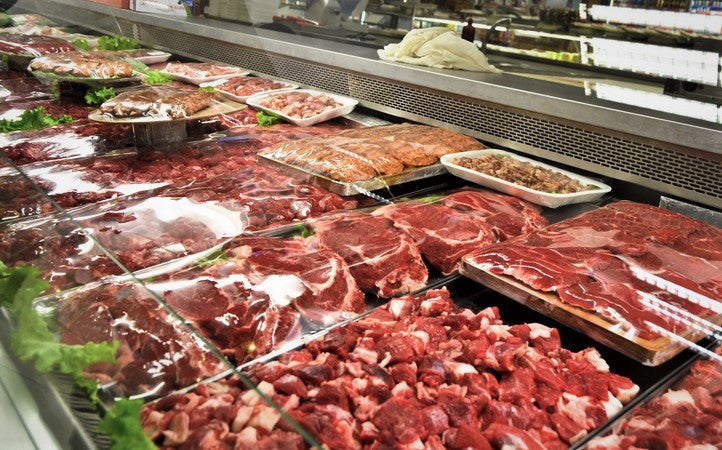
8) How to Buy Beef Like a Pro
Share
Shopping for great beef shouldn't be complicated. I’ll simplify it for you. The main source of confusion arises in the terminology:
"Grass-Fed" vs "Grass-Finished"
All cattle eat grass, so a claim that your beef comes from "grass-fed" cattle is not saying much! What you are looking for is grass-finished beef. A "grass-fed" steer typically eats grass for his first year of life, but then is locked up and fed grain for several months prior to slaughter. A grass-finished beef was both raised and then fattened on forages and hay alone. We can guarantee that our cattle have never tasted grain.

"Commercial" vs "All-Natural" vs "Organic"
Commercially produced beef comes from animals fattened in a feedlot, meaning they are confined to a dirt paddock and eat only a grain-based ration fed twice a day. That ration typically is based on GMO corn and soy and laced with antibiotics to mitigate the fact that cattle didn't evolve to eat grain. Finally, to maximize growth, they were probably implanted with growth hormones. This is the cheapest way to produce beef.
Organic beef may sound better, but still, the animal is likely finished in a feedlot. However, its grain cannot be GMO corn or GMO soy, and the animal cannot receive antibiotics or hormones. Furthermore, the grain must be organically produced, and everything about the production system (such the type of fence post used!) must be organic. This is the most expensive way to raise beef, but, ironically, it does NOT ensure the animal isn't locked into a feedlot and fed an unnatural diet – there are plenty of certified organic feedlots.
All-natural means different things to different producers. To us, it means that animals are born on open pastures, live their entire lives on open pastures, eat only forage and hay, and never receive GMO or antibiotics in feed, or hormone supplements. (Here's a more in-depth look at how seriously we take our animals' pastures.)
Our way of producing beef is more expensive than commercial production because it takes longer to finish an animal on grass than on grain. (It's less expensive than if we were certified organic, however, because we don't go to the extreme of insisting that everything aspect of the production system be certified organic.) Certification always adds cost, but does not always achieve one's goals.

Level of Finish
Regardless of what and how an animal is fed, its beef can be well finished or poorly finished, and the meat may or may not be aged. "Finish" refers to how fattened an animal is. It takes longer to get a steer to a high level of finish on grass — we typically expect 24-28 months. But a steer fed grain will be finished in just 6-7 months. Why does grass finishing take longer?
A steer (i.e. young male bovine) is still a growing adolescent until he is about 18-20 months old, and weighs around 1,000 lbs. Until then, most of the energy and protein he consumes goes to growing bone and muscle. As he matures, more of his intake goes to producing fat, and it’s the fat that determines how juicy, tender, and flavorful the beef will be. By the time the typical steer has grown the bone, muscle, and fat needed to produce superior beef, he will weight around 1,250 lbs or more. You can find plenty of "grass-fed beef” for sale from calves that were slaughtered at only 800 lbs — count on its being dry, tough, and less flavorful!
(We take the same care with our hogs- read more here if you'd like to know more about that.)
